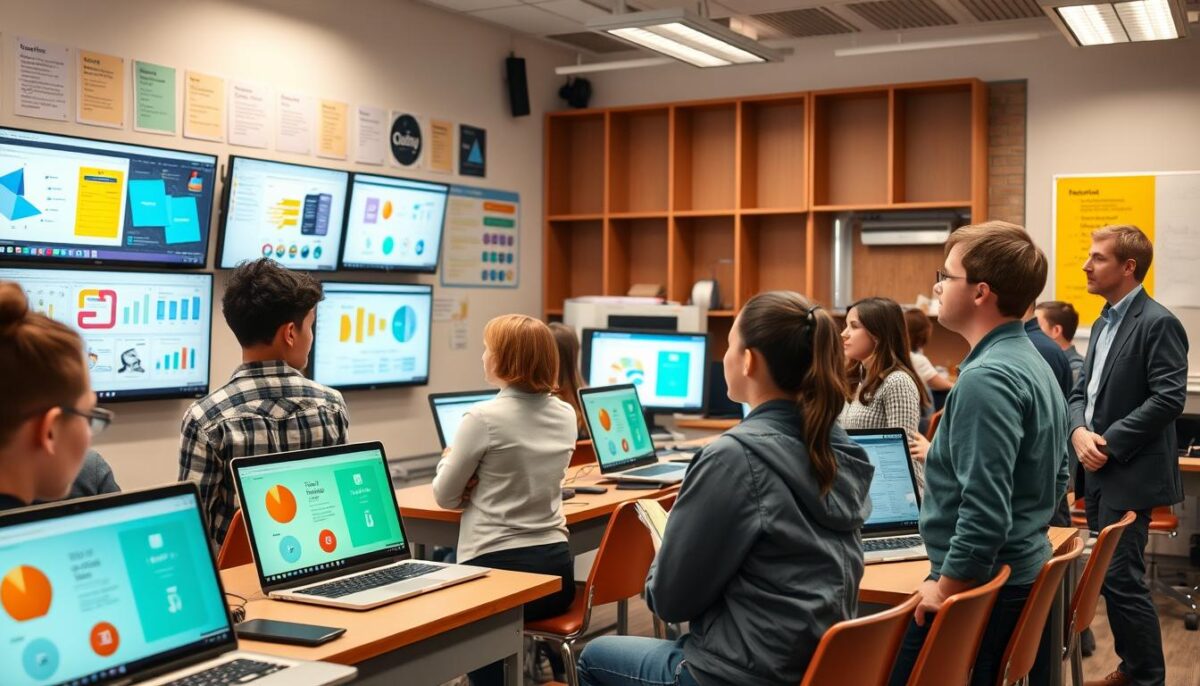In today’s rapidly evolving tech landscape, student presentations have emerged as a powerful platform for showcasing innovation and creativity. These innovative presentations not only captivate the attention of industry leaders but also highlight the impressive presentation skills exhibited by young talent. Tech specialists are increasingly recognizing the value of student engagement during these presentations, as they provide a glimpse into the future of technology and the fresh ideas that will shape it.
Insights gathered from the National Association for Educational Advancement and interviews with various industry experts reveal a growing admiration for the way students articulate their concepts and solutions. As these students demonstrate critical thinking and originality, they increasingly win over tech specialists, who see in them the potential for groundbreaking contributions to the industry.
The Evolution of Student Presentations
The landscape of student presentations has witnessed dramatic changes over the years. Traditional methods such as chalkboard presentations and overhead projectors have given way to innovative digital presentations. This shift underscores the importance of digital literacy, equipping students with the necessary skills to thrive in a technology-driven world.
From Traditional to Digital Formats
In earlier educational settings, students relied heavily on physical presentation formats. Chalkboards served as the primary medium for sharing ideas, while overhead projectors facilitated the display of printed materials. As educational institutions embrace the evolution of presentations, digital formats have become prevalent. Tools like PowerPoint, Prezi, and Google Slides allow for the integration of multimedia elements, fostering a more engaging and interactive experience. This transition has opened avenues for creativity, enabling students to present information in visually appealing ways.
Impact of Technology on Presentation Skills
Technology in education enhances not only the way students present but also how they develop crucial presentation skills. The use of various presentation software and online collaboration platforms cultivates teamwork and communication. A study indicates that students who utilize technology-driven presentations report higher confidence levels and improved public speaking abilities. Despite the benefits, reliance on digital tools may sometimes inhibit spontaneous interaction, posing challenges that educators must navigate. Understanding both the advantages and drawbacks of various presentation formats is essential for maximizing student learning outcomes.
Student Presentations Impress Tech Specialists
Student presentations have gained significant attention within the tech industry. Numerous student case studies highlight impressive presentations that have captivated experts. These presentations showcase originality, advanced technology use, and clear communication, resulting in tech industry recognition. Such examples provide insights into what makes a presentation stand out in the competitive world of technology.
Case Studies of Notable Presentations
A selection of student case studies showcases impressive presentations that garnered acclaim from tech professionals. For instance, a team at Stanford University utilized augmented reality in their project on environmental sustainability. Their captivating presentations not only engaged the audience but also demonstrated innovative problem-solving approaches. Similarly, students from MIT presented a blockchain solution for supply chain transparency, which received accolades for its clarity and practical application.
Key Factors That Captivate Tech Experts
Several key factors contribute to the ability of student presentations to enchant tech specialists. These include:
- Storytelling Techniques: Engaging narratives that connect with the audience on a personal level enhance the impact of presentations.
- Audience Engagement: Interactive elements, such as live polls or Q&A sessions, foster a dynamic exchange and keep the audience invested.
- Innovative Ideas: Presenting solutions to real-world problems showcases students’ critical thinking and attracts the attention of industry leaders.
Professional feedback consistently highlights these aspects as crucial in a successful presentation. By focusing on these elements, students can increase their chances of making a lasting impression on tech specialists.

Skills Developed Through Presentations
Participating in presentations cultivates a diverse range of essential skills that contribute to overall personal and professional growth. Two critical areas of development include public speaking and communication skills, which are paramount in effectively conveying ideas and engaging audiences. These skills not only serve students in academic settings but also play a significant role in future career endeavors.
Public Speaking and Communication Skills
Public speaking forms the backbone of effective communication in any professional landscape. Mastering this skill enables students to articulate their thoughts confidently. Whether addressing a classroom or presenting at a conference, students learn to captivate audiences through exciting content delivery and clear messaging. Effective communication skills enhance collaboration and foster relationships in diverse professional environments.
Critical Thinking and Problem-Solving Abilities
Preparing for presentations requires students to engage in critical thinking. This process includes analyzing data, constructing logical arguments, and anticipating audience questions. Such preparation not only enhances their ability to communicate effectively but also equips them with problem-solving skills necessary for real-world challenges. Students become adept at navigating complex issues and crafting solutions, crucial components of skills development.
| Skill | Description | Benefits |
|---|---|---|
| Public Speaking | The ability to speak effectively in front of an audience. | Boosts confidence and facilitates professional networking. |
| Communication Skills | Clearly conveying ideas in verbal and written forms. | Enhances teamwork and builds rapport with colleagues. |
| Critical Thinking | Analyzing information critically to form reasoned judgments. | Improves decision-making and promotes innovative solutions. |
| Problem-Solving | Identifying issues and finding effective solutions. | Prepares for real-world challenges and workplace dynamics. |
The Role of Mentorship and Networking
In the competitive landscape of technology and innovation, mentorship plays a critical role in enhancing students’ presentation skills. Experienced professionals provide invaluable guidance, offering feedback that helps refine content and delivery. This support not only boosts confidence but also ensures that student presentations resonate effectively with their audience. Mentors, often well-connected within the industry, can act as catalysts for students, fostering essential industry connections that are pivotal for professional development.
Networking serves as another vital element in students’ journeys, providing exposure to industry professionals who can share insights and experiences. Through events, workshops, and mentorship programs, students have the opportunity to engage with experts, gaining practical knowledge about current trends and expectations in the tech industry. By building these relationships, students can identify collaborative opportunities that might lead to real-world projects, enhancing their learning experience beyond the classroom.
To maximize the benefits of mentorship and networking, students should actively seek out industry connections through platforms like LinkedIn and alumni networks. Attending relevant conferences and utilizing resources provided by educational institutions can also facilitate meaningful relationships. These strategies not only enhance presentation skills but also pave the way for future success, as students cultivate a robust professional network essential for their careers in technology.



